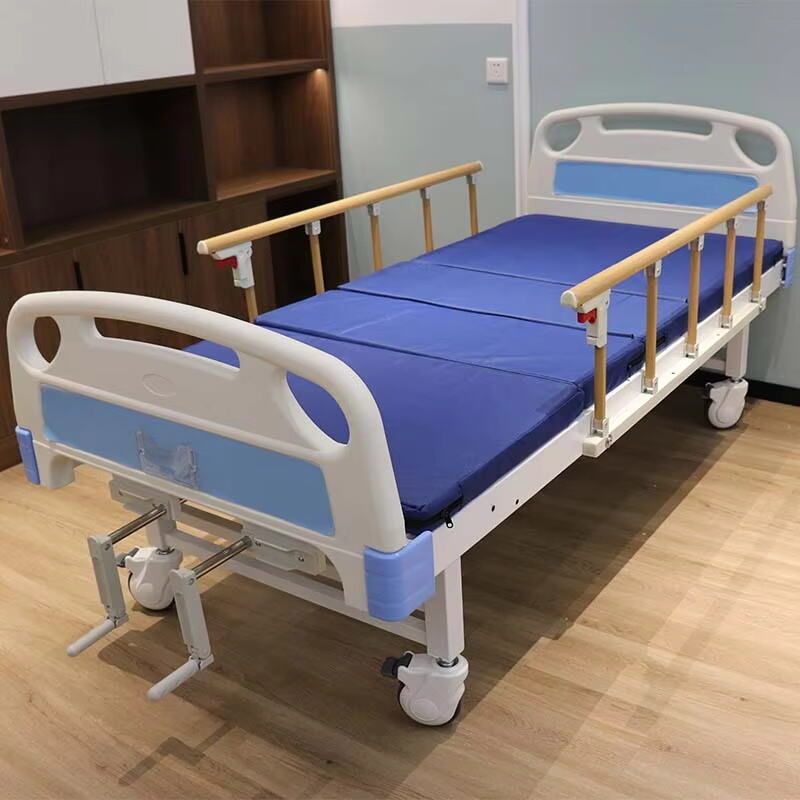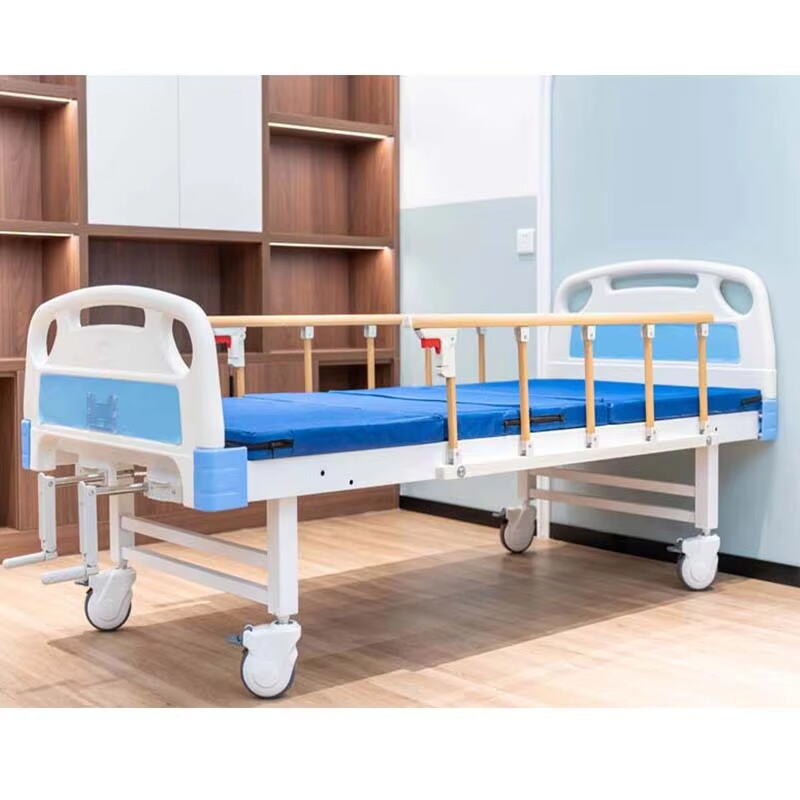Improving Quality of Life for Long-Term Bedridden Patients
Caring for individuals who spend extended periods in bed requires specialized attention and equipment. Among the most critical tools in such care is the antidecubitus bed. An antidecubitus bed is designed to address the unique needs of bedridden patients, reducing the risk of pressure ulcers while enhancing overall comfort and mobility. This specialized equipment has become a standard in both clinical and home care settings, ensuring patients receive the support they need for long-term recovery or maintenance.
Design Features That Support Comfort and Safety
Advanced Pressure Distribution
One of the defining features of an antidecubitus bed is its ability to redistribute pressure. Traditional mattresses can create concentrated pressure points, especially over bony areas, increasing the risk of skin breakdown. An antidecubitus bed utilizes alternating pressure or low air loss systems that consistently adjust the surface beneath the patient. This minimizes continuous pressure on any single part of the body, greatly reducing the likelihood of developing pressure sores.
Adjustable Support Functions
Antidecubitus beds often come with multiple adjustable features, including the ability to raise or lower the head, feet, or entire bed height. These adjustments not only make patient positioning more comfortable but also assist caregivers in performing medical tasks and hygiene routines more easily. The result is a safer, more ergonomic environment for both patient and caregiver.
Health Benefits of Antidecubitus Beds
Prevention of Pressure Sores
Antidecubitus beds are specifically engineered to prevent pressure sores. The materials and mechanics used in their construction allow for consistent pressure relief, which is vital for patients who cannot reposition themselves regularly. This functionality can lead to significantly better skin health outcomes and reduce the need for intensive wound care treatments.
Enhanced Circulation and Comfort
Proper blood circulation is critical for bedridden individuals. By reducing pressure and encouraging micro-movements, an antidecubitus bed supports healthy blood flow. Improved circulation reduces swelling, discomfort, and other complications associated with prolonged immobility, making it an essential component in long-term patient care.

Suitable Types of Antidecubitus Beds
Static Models with Memory Foam or Gel
Static antidecubitus beds typically use memory foam, gel layers, or other high-density materials to reduce pressure. These are particularly effective for patients who can be manually repositioned. Though non-mechanical, they provide reliable support and comfort, making them a suitable option for home care scenarios.
Dynamic Systems with Air Cells
Dynamic antidecubitus beds use air cells that alternately inflate and deflate to shift pressure across the patient’s body. These systems are ideal for patients at high risk of developing pressure ulcers and are commonly found in hospital settings. With precise control settings, dynamic beds offer a higher degree of customization for individual patient needs.
Integrating Antidecubitus Beds into Patient Care
Compatibility with Medical Equipment
An antidecubitus bed is designed to work seamlessly with other medical devices. From IV poles and oxygen stands to patient lifts and side rails, these beds are engineered with multiple points of integration. This feature ensures that patient safety and care efficiency are maintained without compromising functionality.
Ease of Cleaning and Maintenance
The materials used in antidecubitus beds are typically antimicrobial and waterproof, making them easy to clean and maintain. This reduces the risk of infection and ensures the bed remains hygienic throughout long-term use. Removable covers and washable components further enhance the practicality of these beds in both professional and domestic environments.
Psychological and Emotional Benefits
Improved Sleep Quality and Rest
Comfort is a key factor in recovery and well-being. An antidecubitus bed provides a supportive surface that adapts to the patient’s body, promoting restful sleep. Better sleep leads to improved mood, faster healing, and a more positive outlook, all of which are essential for long-term care patients.
Boost in Patient Dignity and Independence
Many antidecubitus beds are designed with user-friendly controls, allowing patients to make minor adjustments themselves. This small level of autonomy can greatly enhance a patient's sense of dignity and independence, contributing to better mental and emotional health.
Caregiver Advantages
Reduced Physical Strain
Adjustable features and ergonomic design make antidecubitus beds beneficial for caregivers as well. Raising the bed to a comfortable height for care tasks reduces physical strain and helps prevent workplace injuries. This promotes better caregiver performance and patient outcomes.
Enhanced Monitoring and Safety
Some advanced antidecubitus beds come equipped with alert systems or sensors that notify caregivers of unusual patient movement or pressure buildup. These features allow for timely interventions, increasing safety and enabling more responsive care practices.
Longevity and Economic Considerations
Long-Term Cost Efficiency
While the initial investment in an antidecubitus bed may be higher than that of a standard bed, the long-term cost savings are considerable. Reduced incidence of pressure ulcers, fewer hospitalizations, and decreased need for additional medical equipment all contribute to economic efficiency.
Durable Construction for Extended Use
Antidecubitus beds are built to last, with high-quality materials and robust engineering. This durability makes them suitable for long-term use in both professional healthcare settings and private homes, offering value and reliability over time.
Customization Options
Tailoring to Patient Needs
From adjustable firmness levels to different sizes and shapes, antidecubitus beds can be customized to meet specific patient requirements. This customization ensures that patients receive the exact level of support they need, further enhancing the bed’s effectiveness.
Add-On Accessories
Various accessories such as side rails, remote controls, and specialized mattress overlays can be added to an antidecubitus bed. These additions not only improve safety but also enhance user experience and adaptability to unique medical situations.
FAQ
What is the primary function of an antidecubitus bed?
The primary function of an antidecubitus bed is to prevent pressure ulcers by redistributing pressure across the body and improving circulation for bedridden patients.
Can an antidecubitus bed be used at home?
Yes, many models are designed for home use and provide the same level of comfort and pressure relief as those used in clinical settings.
How often should an antidecubitus bed be cleaned?
The bed surface should be wiped down daily with appropriate disinfectants, and removable covers should be washed at least once a week or whenever soiled.
Are antidecubitus beds covered by insurance?
In many cases, health insurance may cover the cost of an antidecubitus bed when prescribed by a healthcare provider, especially for long-term or high-risk patients.
Table of Contents
- Improving Quality of Life for Long-Term Bedridden Patients
- Design Features That Support Comfort and Safety
- Health Benefits of Antidecubitus Beds
- Suitable Types of Antidecubitus Beds
- Integrating Antidecubitus Beds into Patient Care
- Psychological and Emotional Benefits
- Caregiver Advantages
- Longevity and Economic Considerations
- Customization Options
- FAQ

